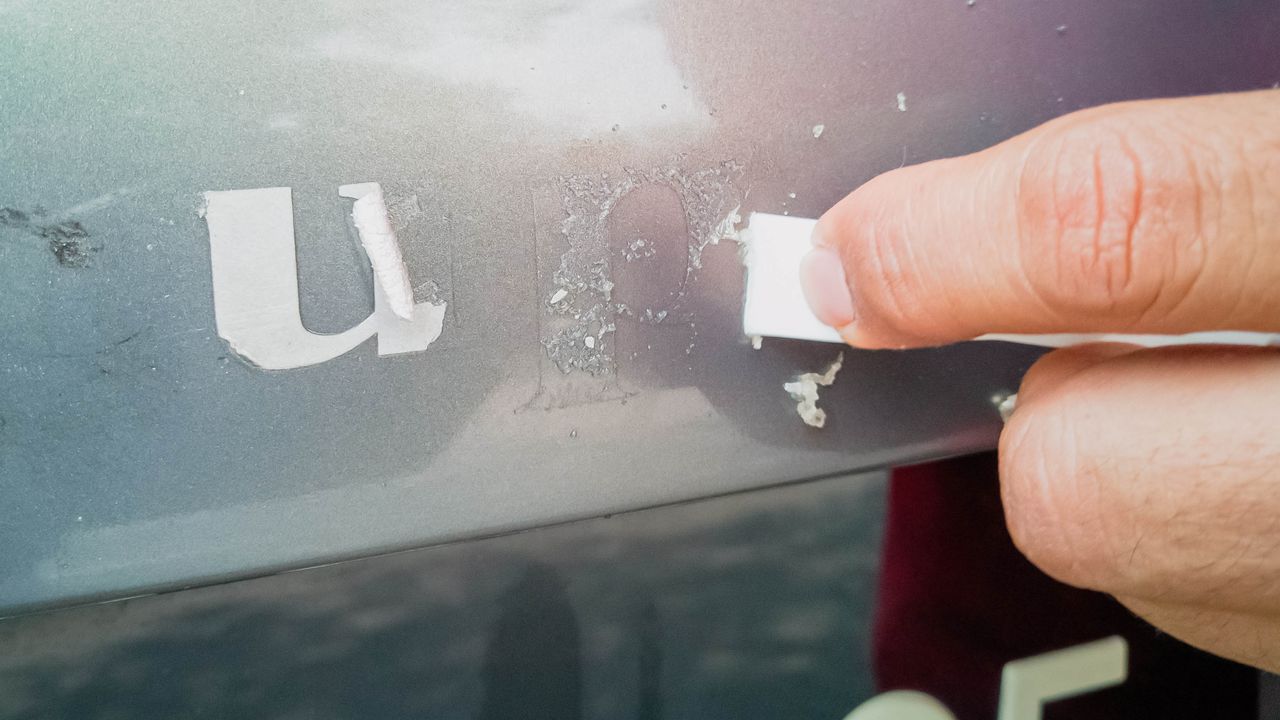Lifestyle
Remove Stickers from Glass: 3 Effective Methods to Try

Removing stickers from glass surfaces can often be a challenging task, especially when dealing with stubborn adhesive residues. Fortunately, several effective methods utilize common household items, making it easier for individuals to restore their glass items without damaging them.
Gentle Techniques for Window Glass and Mirrors
For large flat surfaces like windows and mirrors, a cautious approach is essential to avoid scratching or streaking. The first method involves using warm soapy water. Mix a few drops of dish soap with warm water in a spray bottle. Spray the solution directly onto the sticker and the surrounding area, ensuring it is fully saturated. Allow it to soak for about 5-10 minutes to loosen the adhesive bond.
Once the sticker has softened, gently scrape it away using a plastic card, such as an old gift card. Work from one edge toward the center to minimize any risk of scratching the glass. Finish by wiping the surface with a lint-free microfiber cloth to achieve a streak-free finish.
For more persistent stickers, consider a mixture of equal parts white vinegar and warm water. Soak a soft cloth in this solution and press it against the sticker for 10-15 minutes, allowing the mild acid in the vinegar to break down the adhesive. After soaking, wipe away the sticker and any residue in gentle circular motions. To eliminate any lingering vinegar smell, complete the process with a commercial glass cleaner, wiping in horizontal and vertical strokes.
Effective Solutions for Food Jars and Bottles
When recycling glass food containers, the adhesive used on labels often withstands moisture and handling, making removal a hassle. The hot water soak method is particularly effective. Fill a sink or large bowl with hot (not boiling) water and add a generous squirt of grease-cutting dish soap. Submerge the jar completely for 15-20 minutes, allowing the heat to penetrate behind the label and loosen the adhesive.
While the jar is still warm, carefully peel off one corner of the label. If resistance is encountered, return the jar to the hot water for a few more minutes. For any remaining sticky residue, rub the area with your fingers or a soft cloth while the glass remains warm, as the heat keeps the adhesive pliable.
In cases of particularly stubborn residue, applying a small amount of cooking oil, such as olive oil or baby oil, directly to the affected area can be effective. Allow the oil to sit for 5-10 minutes to break down the adhesive. Wipe away the loosened residue with a paper towel, applying firm pressure. Finally, wash the jar thoroughly with dish soap and warm water to ensure all oil is removed, especially if the jar will be reused for food storage.
Careful Handling of Picture Frame Glass
Picture frame glass is typically thinner and more susceptible to damage, requiring a gentle approach. Remove the glass from the frame carefully to prevent any damage to the frame or artwork. Set a hairdryer to medium heat and hold it approximately 3-4 inches away from the sticker. Direct warm air at the sticker for 30-60 seconds, moving the dryer slightly to heat the adhesive evenly.
As the adhesive softens, gently lift one corner of the sticker with your fingernail or the edge of a plastic card. Continue peeling the sticker away while applying heat to the separation point to avoid cracking the glass. After successfully removing the sticker, clean any remaining residue as needed.
These methods provide practical solutions for effectively removing stickers from various glass surfaces. By utilizing readily available household items, individuals can restore their glass items to pristine condition without resorting to harsh chemicals or excessive scrubbing.
-

 Science4 weeks ago
Science4 weeks agoInventor Achieves Breakthrough with 2 Billion FPS Laser Video
-

 Health1 month ago
Health1 month agoCommunity Unites for 7th Annual Into the Light Walk for Mental Health
-

 Top Stories1 month ago
Top Stories1 month agoCharlie Sheen’s New Romance: ‘Glowing’ with Younger Partner
-

 Entertainment1 month ago
Entertainment1 month agoDua Lipa Aces GCSE Spanish, Sparks Super Bowl Buzz with Fans
-

 Business1 month ago
Business1 month agoTyler Technologies Set to Reveal Q3 Earnings on October 22
-

 Entertainment1 month ago
Entertainment1 month agoMother Fights to Reunite with Children After Kidnapping in New Drama
-

 World1 month ago
World1 month agoR&B Icon D’Angelo Dies at 51, Leaving Lasting Legacy
-

 Health1 month ago
Health1 month agoCurium Group, PeptiDream, and PDRadiopharma Launch Key Cancer Trial
-

 Entertainment1 month ago
Entertainment1 month agoRed Sox’s Bregman to Become Free Agent; Tigers Commit to Skubal
-

 Health1 month ago
Health1 month agoNorth Carolina’s Biotech Boom: Billions in New Investments
-

 Science1 month ago
Science1 month agoNorth Carolina’s Biotech Boom: Billions Invested in Manufacturing
-

 Top Stories1 month ago
Top Stories1 month agoDisney+ Launches Chilling Classic ‘Something Wicked’ Just in Time for October









